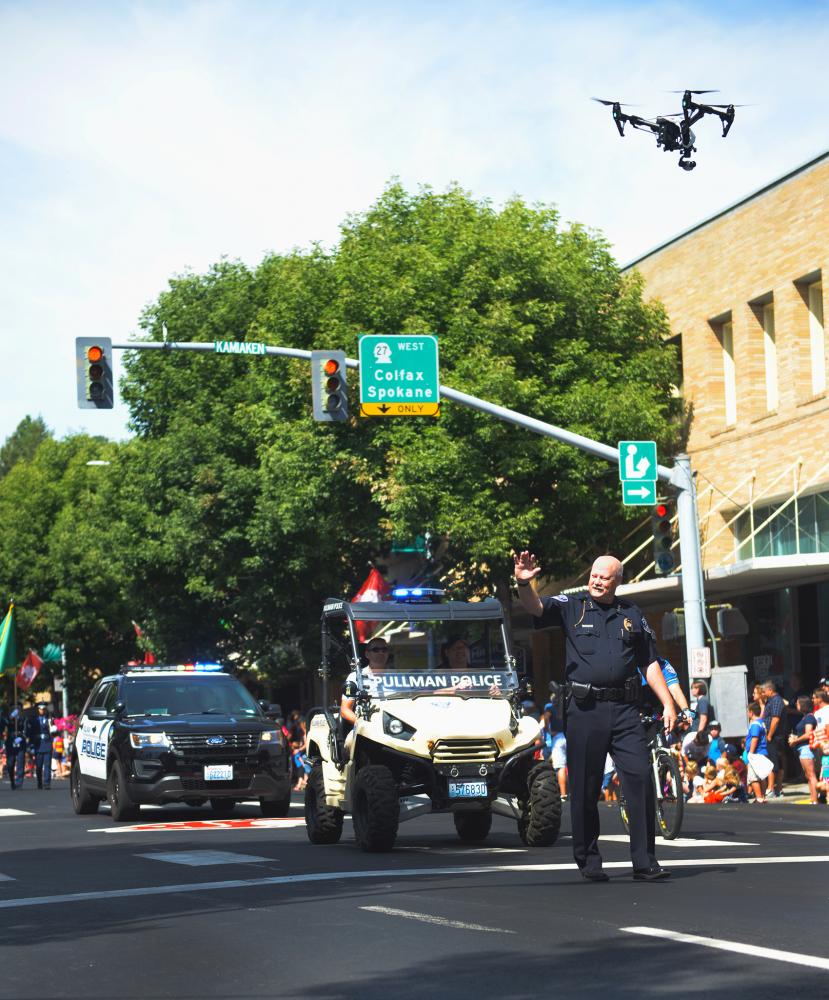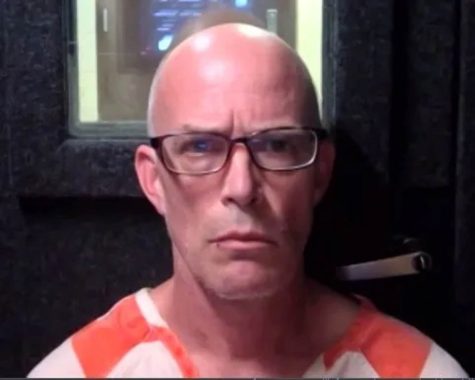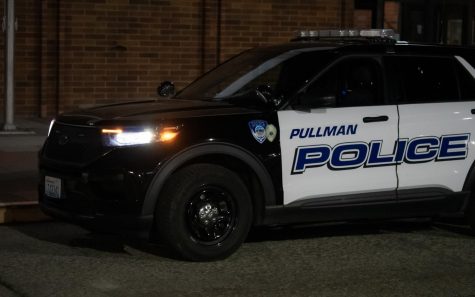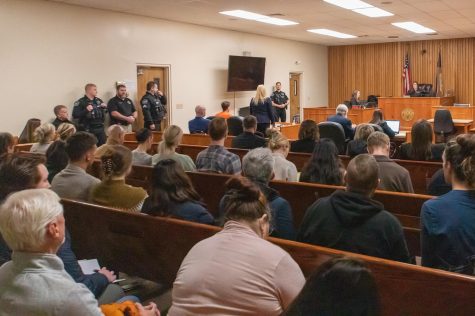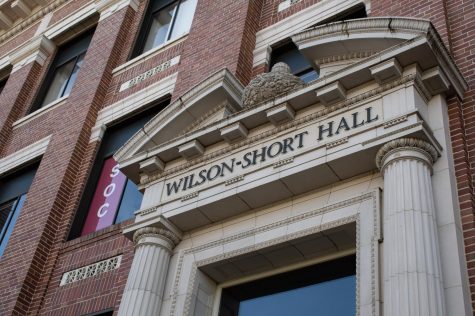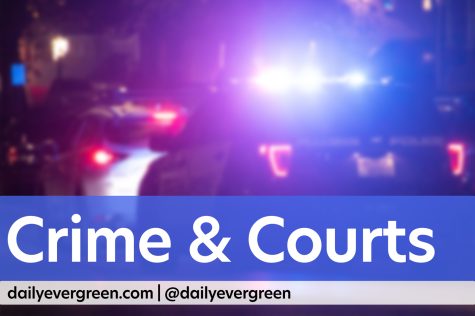Police to expand drone use
The drones and supplies cost about $9,000, bought with public consent
CODY COTTIER | Daily Evergreen File
Pullman Police Chief Gary Jenkins and the department’s recently purchased drone at the Lentil Festival Parade on Aug. 18.
September 25, 2017
In July, the Pullman Police Department purchased four drones that will be used for traffic, rescue or other police operations.
Most of Pullman’s population was introduced to the remote-controlled flying objects this August, either during the department’s Aerial Adventure Day or during the Lentil Festival Parade.
Outside of demonstrations for the public and training, the police department has only used their drones in the field once. Ryan McNannay, senior police officer and one of three Pullman Police Department drone pilots, said a drone was used during a warrant search.
Police Chief Gary Jenkins said that the main purpose of the drones is to help ensure the safety of both the public and his officers.
“The biggest value for us,” Jenkins said, “is the officer safety element of it.”
The money for the drones came from the 2017 budget, which was approved last year. Jenkins said that they held public meetings that allowed taxpayers to give their opinions, which were usually positive. He said he also feels like the purchase was a good deal for the department.
“We spent around $9,000, and that was to purchase four drones, lots of extra batteries, some replacement propellers and an additional warranty on each of them,” Jenkins said. “I feel like we got a lot for what we paid.”
The four drones, which consist of three different models, can be used in various ways. Possible uses include clearing houses before officers enter, search and rescue operations, monitoring weather events and traffic control, Jenkins said.

The Phantom model police drone takes off Friday afternoon Friday at the Pullman Police Department.
The largest model that the department uses, known as Inspire, has two cameras, including one capable of Forward Looking Infrared thermal cameras. Inspire could be used for low visibility situations, McNannay said.
The mid-sized model is known as Phantom, while the two smaller ones are called Sparks. The smallest drones would ideally be used to clear buildings, or in cases where the drone needs to remain undetected, McNannay said.
During a demonstration of the larger drone, Inspire, McNannay said pilots are not allowed to fly the drone higher than 400 feet.
However, the Pullman Police Department currently must clear any flying of their drones through Inter-State Aviation Inc. at Pullman-Moscow Regional Airport.
“Right now, we’re within five miles of an airport,” McNannay said. “So, anytime that we do fly, we’re notifying the airport here.”
This could raise problems in a situation where time is critical, as the department must first get in contact with the airport so they can be approved to fly, McNannay said.
The police department is currently attempting to combat this issue by requesting a Jurisdictional Certificate of Authorization from the Federal Aviation Administration, Jenkins said. This would allow the department to fly the drones without needing to receive prior approval, as well as allowing for in-house training for police pilots. The certification process could take anywhere from one to six months.
Currently, the three certified pilots all went through the training and commercial certification process privately. If the department is approved for their certificate, they could then train pilots themselves, which would be more cost-effective and quicker, Jenkins said.
“They are very easy to fly,” Matt Burkett, senior police officer and pilot, said. “You have to be licensed by the FAA to fly [drones] commercially.”
The main issue being raised with the drones outside of an authorization certificate is the possibility that people’s privacy would be accidently violated while the drones are used for other purposes.
“If it’s in the air it can potentially see areas that are protected by the Fourth Amendment,” McNannay said. “I like my privacy as much as anyone else. I don’t want somebody flying a drone over, looking in my backyard for no good reason. So, we’ve worked that into our policy that we’re not intentionally doing that.”


